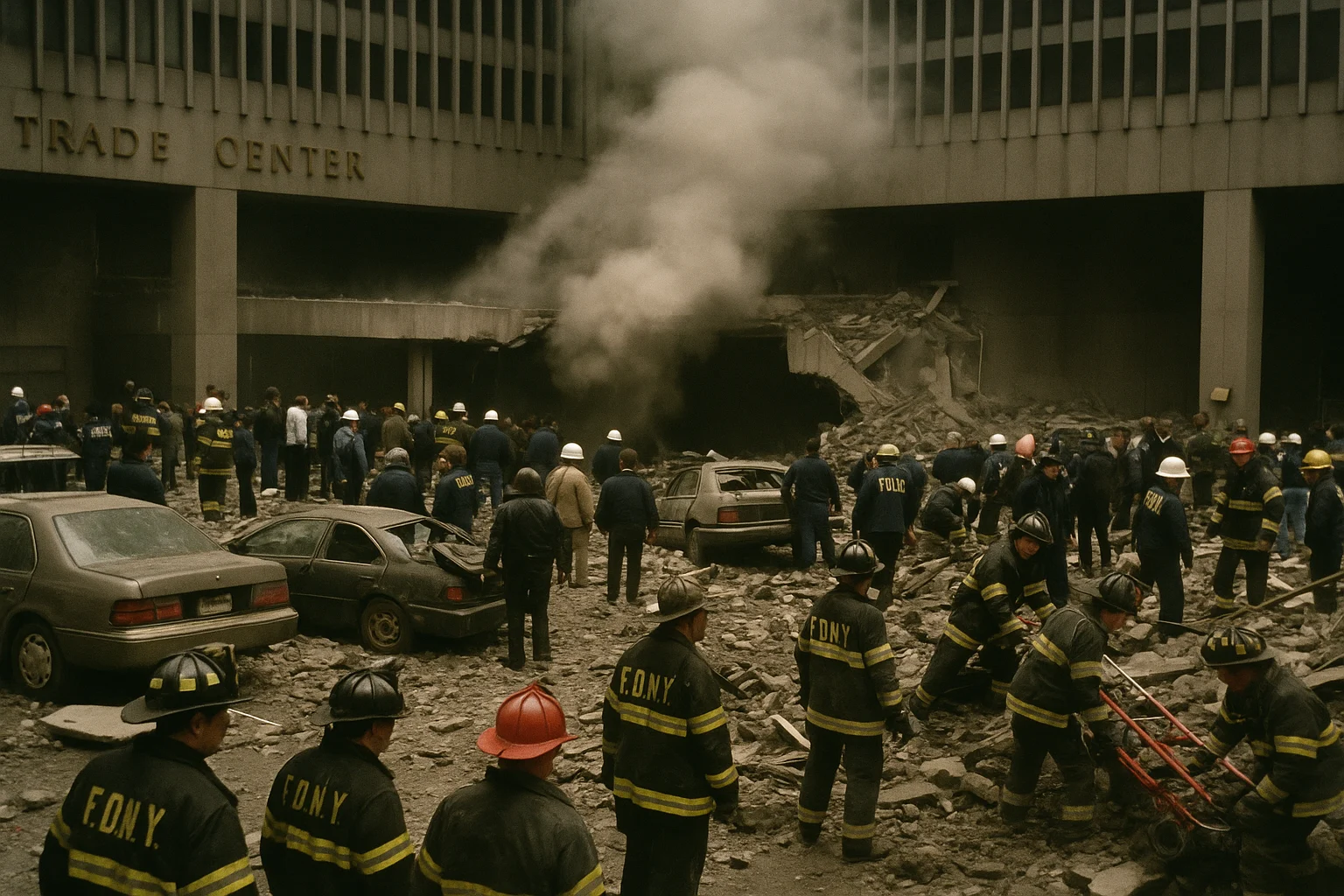
1993 World Trade Center bombing
by: The Calamity Calendar Team
February 26, 1993
A Dark Cloud Over New York
It was a crisp winter afternoon in Lower Manhattan on February 26, 1993. The hustle and bustle synonymous with New York City flowed through the streets, the Twin Towers of the World Trade Center standing sentinel over the swarm of financial activity below. But underneath the North Tower, in the recesses of its underground parking garage, a plot was simmering — one that would etch itself into the city's history with an indelible mark.
An Unseen Threat Brewing
The World Trade Center towers were more than just architectural marvels; they were emblems — symbols of globalization and economic prowess. For a group of Islamic extremists led by Ramzi Yousef, these represented targets for a grudge against U.S. foreign policies in the Middle East. Yousef, along with conspirators like Sheikh Omar Abdel-Rahman and Mohammad Salameh, envisioned destruction on a grand scale. Their plan wasn't just to damage but to collapse one tower into another, causing maximum devastation.
In the weeks leading up to the attack, Yousef and his collaborators meticulously crafted a 1,336-pound nitrate–hydrogen bomb, securing their materials under the guise of normalcy. In the labyrinthine expanse of New York, their activities flew under the radar until it was too late.
Noon in the Heart of Conflict
Noon struck on February 26, and Ramzi Yousef parked a Ryder rental truck loaded with explosives beneath the North Tower. With calculated calm, he exited the vehicle, leaving behind the deadly cargo in the thrumming underbelly of one of the world's busiest hubs.
At 12:17 PM, the bomb detonated with a thunderous roar that echoed through the city's financial district, creating a massive crater 100 feet across and several stories deep. The explosion annihilated concrete floors, cut off power, and filled offices and corridors with acrid smoke — a harrowing challenge for all trapped in its upward crawl.
Chaos and Courage in the Aftermath
Panic gripped the Twin Towers as smoke billowed upward, and the coordinated evacuation began. The scene inside was one of controlled chaos as emergency responders rushed to evacuate thousands, their steady determination etched in the soot and sweat streaks on their skin. Many were trapped in elevators, while others, gasping for air, found themselves navigating darkened stairwells, hoping for salvation amid the clamor.
Thanks for subscribing!
Six lives were lost that day, including a pregnant woman, and over a thousand individuals nursed injuries from the incident. The damage, both physical and psychological, was profound — a significant blow at an estimated $500 million, a cost that transcended structural repairs to encompass the emotional toll borne by survivors.
A Rallying Cry for Security
The bombing's aftermath was a wake-up call for both city and nation. A high-stakes investigation unfolded as law enforcement agencies worked tirelessly to piece together the plot. Their perseverance paid off with the arrest and eventual conviction of several conspirators, including Ramzi Yousef himself. This momentous capture provided a semblance of justice and launched a deeper examination of existing security protocols.
The revelations from this attack spurred immediate changes. Building security was overhauled with a focus on preventing similar breaches. Emergency exits were expanded, stairwell pressurization systems implemented to ward off smoke infiltration, and a robust network of video surveillance was established to act as watchful eyes, vigilant against shadowy threats.
The Shadows That Linger
Looking back, the 1993 bombing marks a poignant, often chilling precursor to the catastrophic events of September 11, 2001. While lessons were learned and security measures amplified, the attack forewarned of an evolving threat landscape — one that demanded a continuous reevaluation of safety strategies on both domestic and international fronts.
The 1993 World Trade Center bombing, thus, remains a key chapter in the narrative of America's battle against terrorism — a testament to the courage of first responders, the resilience of a city under siege, and the never-ending quest for safety in the modern world.
Stay in the Loop!
Become a Calamity Insider and get exclusive Calamity Calendar updates delivered straight to your inbox.
Thanks! You're now subscribed.